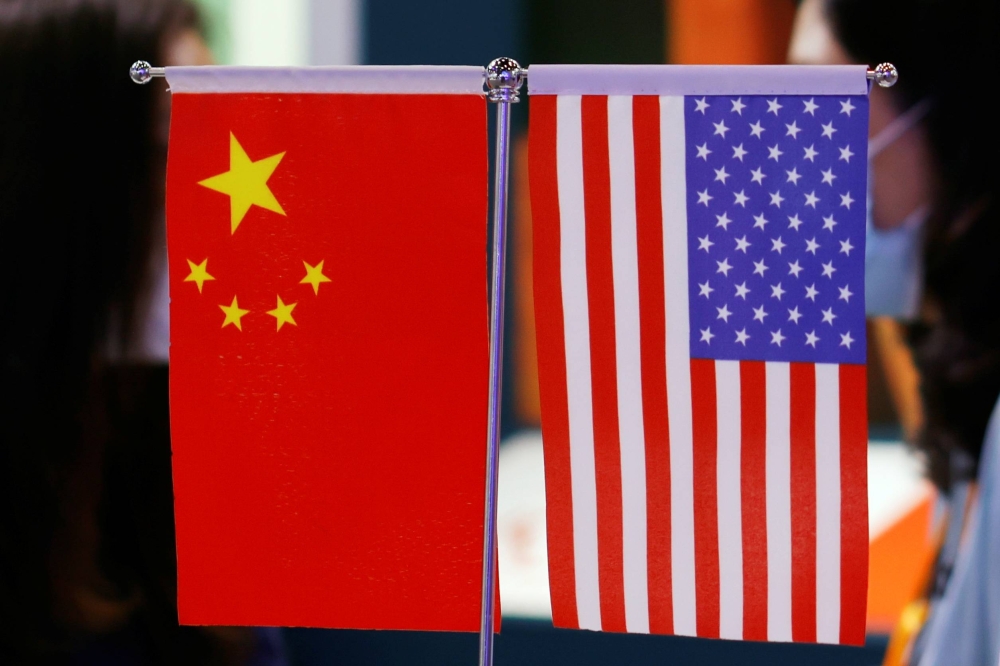
US and China Agree to 90-Day Tariff Extension, Preventing Jump from 10% to 145% Trade Rates
The 90-Day Reprieve: Inside America's Delicate Dance with China's Economic Future
LONG BEACH, California — At 12:01 AM Pacific Time, as massive container ships queued beyond the harbor's edge, a critical deadline passed without the economic catastrophe many had feared.

The United States and China announced a pivotal extension of their tariff truce—a fragile pause that prevented tariffs on Chinese goods from potentially jumping to 145% and kept the current additional rate at a more manageable 10%. The joint statement, emerging from months of delicate negotiations culminating in Stockholm talks, represents not peace, but what economists increasingly describe as "leverage management"—both nations keeping their economic weapons loaded while stepping back from immediate escalation.
This 90-day extension touches every corner of America's $690 billion annual trade relationship with China, from the procurement offices of electronics distributors to the loading docks where longshoremen handle nearly 40% of America's containerized imports.
The Architecture of Economic Brinkmanship
The joint statement released by the White House reveals the careful calibration required to maintain this economic détente. Treasury Secretary Scott Bessent and Trade Representative Jamieson Greer negotiated alongside Chinese Vice Premier He Lifeng to craft an agreement that suspends 24 percentage points of additional tariffs while retaining a 10% base rate—a mathematical precision that reflects the high stakes involved.
"What we're witnessing is not traditional trade policy, but a new form of economic statecraft where tariffs function as diplomatic throttles," observed trade policy experts analyzing the announcement.
Economic statecraft is the use of economic tools to achieve foreign policy goals and exert geopolitical influence. Governments employ measures such as sanctions, tariffs, and trade agreements as leverage to influence the actions of other nations.
The numbers underscore the magnitude of what was avoided: without this extension, American consumers could have faced tariff rates approaching 145% on Chinese goods, while Chinese importers would have confronted rates up to 125% on U.S. products. The economic modeling suggests such rates would have triggered immediate supply chain disruptions across sectors representing nearly 30% of U.S. imports.
A visual comparison of U.S. tariff rates on Chinese goods under different scenarios: pre-truce, the potential escalated rate, and the current 90-day extension rate.
| Scenario | Average U.S. Tariff Rate on Chinese Goods | Notes |
|---|---|---|
| Pre-trade War (Early 2018) | Approximately 3% | Prior to the start of the trade conflict in 2018, average U.S. tariffs on imports from China were significantly lower. |
| Potential Escalated Rate | 145% | This rate has been threatened during periods of escalating trade tensions. |
| Current 90-Day Extension Rate (August 2025) | 30% | Following a truce, this rate consists of a 10% base tariff and an additional 20% tariff related to fentanyl. |
Beijing's parallel announcement from the Customs Tariff Commission of the State Council mirrors Washington's language almost precisely, signaling the coordinated nature of this economic choreography. Both governments committed to maintaining the suspension through mid-November, creating a 90-day window that industry analysts describe as critical for strategic positioning.
Supply Chains in Strategic Suspension
The extension's impact reverberates through America's complex manufacturing ecosystem, where companies have spent an estimated $47 billion on supply chain diversification since trade tensions escalated in April 2025. The automotive, electronics, and consumer goods sectors—most dependent on Chinese manufacturing—now face a paradox of relief and anxiety.

In Michigan's automotive corridor, suppliers who have invested millions in dual-sourcing strategies from Vietnam and Mexico find themselves recalibrating operations built around just-in-time manufacturing principles. The 10% additional tariff represents a cost increase that can be absorbed through efficiency gains and modest price adjustments, while the specter of 145% rates would have forced dramatic operational restructuring.
The electronics sector faces particularly acute challenges, given the irreplaceable nature of many Chinese-manufactured components in the short term. Industry data shows that despite aggressive diversification efforts, American electronics manufacturers remain heavily dependent on Chinese suppliers for critical components, from semiconductors to consumer devices.
Port Communities and Economic Rhythms
In port cities like Long Beach—where container volumes serve as a real-time barometer of economic health—the extension maintains the steady flow of goods that sustains entire regional economies. The port's operations employ not just longshoremen and customs brokers, but an intricate network of truckers, warehouse workers, and logistics coordinators whose livelihoods depend on predictable trade flows.
Recent data from the Port of Long Beach shows that container volumes from China declined by approximately 15% during the period of maximum tariff uncertainty between April and July 2025. The extension provides operational breathing room for the port's complex logistics ecosystem, where even small disruptions can cascade through regional employment patterns.
Container Volume from China at the Port of Long Beach, showing a decline during the period of tariff uncertainty.
| Month/Period | Key Development | Impact on Port of Long Beach Container Volume from China |
|---|---|---|
| April 2025 | A "de facto trade embargo" between the U.S. and China led to a decrease in demand for containers from Chinese ports. | While overall import volumes were high, the volume of empty containers surged by 23% due to reduced outbound demand from China. |
| July 2025 & 2nd Half 2025 (Forecast) | A temporary pause in tariffs led to a short-term increase in imports. However, the National Retail Federation forecast a 5.6% decline in U.S. import cargo volumes for the year due to new tariffs. | The Port of Long Beach saw a record July for imports as retailers rushed to bring in goods during the tariff pause. Despite this, the port forecast a 10% decrease in cargo for the second half of 2025 due to ongoing trade policy uncertainty. |
The broader California economy, which processes roughly 40% of America's goods trade with Asia, has become a critical barometer for the health of trans-Pacific economic relationships. State economic data indicates that trade-dependent employment in Southern California has become increasingly sensitive to policy announcements from both Washington and Beijing.
China's Strategic Recalibration
Beijing's decision to maintain the tariff suspension while committing to remove certain non-tariff barriers reflects complex domestic pressures within China's export-dependent manufacturing regions. Chinese customs data shows that export volumes to the United States declined by 23% in automotive and electronics sectors during the April escalation period.
The commitment to suspend non-tariff countermeasures—including certain inspection delays and licensing procedures—represents potentially significant relief for American companies operating in China. These measures, while less visible than headline tariff rates, often create substantial operational frictions that compound the economic impact of formal trade barriers.
Non-tariff barriers are trade restrictions that use methods other than direct taxes or tariffs to make importing goods more difficult or costly. These measures include quotas, embargoes, and complex administrative procedures, such as licensing requirements, which can create significant delays and ultimately discourage trade.
Manufacturing centers in Shenzhen and the Pearl River Delta, which have historically served as the backbone of China's export economy, have accelerated domestic market development strategies while maintaining crucial American business relationships. This dual-track approach reflects Beijing's recognition that complete decoupling remains neither feasible nor economically optimal for either nation.
The 90-Day Strategic Window
Industry analysts characterize the extension period as a critical window for both strategic positioning and practical preparation. Rather than simply maintaining status quo operations, companies across multiple sectors are using the time for fundamental reassessment of their global operations.
The consumer electronics industry exemplifies this approach, with companies accelerating plans to diversify sourcing while strengthening relationships with existing Chinese suppliers who have proven adaptable to changing trade conditions. This strategy reflects broader corporate America's philosophy of using stability to prepare for instability—leveraging predictability to hedge against future uncertainty.
Manufacturing sectors that have invested heavily in automation and efficiency improvements are finding that the 10% additional tariff can be largely absorbed through operational optimization. However, the knowledge that rates could escalate dramatically in November continues to drive investment in supply chain resilience and geographic diversification.
The New Economics of Managed Crisis
Perhaps most significantly, the extension highlights how America's economic relationship with China has evolved into what economists term a "managed crisis" rather than a stable partnership. The joint statement's careful language—emphasizing "suspension" rather than "reduction" of tariffs—signals that both nations view current conditions as temporary arrangements rather than lasting solutions.
This represents a fundamental departure from traditional trade relationships, where agreements typically aimed for permanent liberalization and predictable rules-based commerce. Instead, the U.S.-China relationship now operates through rolling negotiations where economic policies serve as bargaining chips in broader geopolitical competition.
The 90-day cycle creates what trade experts describe as a rhythm of continuous diplomacy, keeping both sides engaged in substantive negotiations while preventing the kind of catastrophic escalation that could damage global economic stability. This approach reflects the unique challenge of managing economic interdependence between strategic competitors.
Economic Interdependence and Strategic Competition
The tariff extension underscores the complex reality that complete economic decoupling between the world's two largest economies remains neither technically feasible nor economically rational in the near term. Despite significant investment in supply chain diversification, American companies continue to depend on Chinese manufacturing for products ranging from rare earth elements to consumer electronics.
Similarly, Chinese manufacturers rely on American markets not just for revenue, but for access to cutting-edge technology and innovation ecosystems that remain difficult to replicate domestically. This mutual dependence creates what economists call "weaponized interdependence"—each side possessing economic leverage that could inflict significant damage, but only at considerable cost to themselves.
Coined by scholars Henry Farrell and Abraham Newman, weaponized interdependence describes how states can use their central position in global economic networks for coercion. By controlling key nodes in finance, technology, or supply chains, powerful nations can turn these interconnected systems into tools of power to pressure or punish other states.
The extension preserves this delicate balance while allowing both nations to continue building alternative economic relationships that could eventually reduce mutual vulnerability. American investment in domestic semiconductor manufacturing and Chinese development of indigenous technology capabilities represent parallel efforts to reduce strategic dependencies while maintaining economically beneficial trade relationships.
November's Approaching Crossroads
As the 90-day window opens, both American businesses and Chinese manufacturers face the challenge of operating within temporary certainty while preparing for an uncertain future. The extension provides operational breathing room, but the fundamental questions underlying U.S.-China trade relations—from technology transfer to market access to strategic competition—remain unresolved.
The November decision point will require both nations to balance immediate economic interests against longer-term strategic objectives. Recent polling of American manufacturers indicates cautious optimism about the extension's impact on short-term operations, combined with continued anxiety about long-term planning in an environment of rolling policy uncertainty.
For the global economy, the U.S.-China trade relationship has become a critical stress test of whether economic interdependence can coexist with strategic competition. The 90-day extension represents another chapter in this evolving experiment—a careful dance between cooperation and confrontation that reflects the complex realities of 21st-century geopolitics.

The ships continue arriving at Long Beach, the containers continue moving inland, and the delicate machinery of global commerce continues functioning within this framework of managed uncertainty. Whether this approach proves sustainable will likely be determined not just by the November negotiations, but by the accumulated choices of millions of businesses and workers navigating an economic relationship that has become both indispensable and strategically fraught.
The next 90 days will test whether two economic superpowers can maintain this delicate balance indefinitely, or whether the contradictions between economic integration and strategic competition will ultimately force a more definitive resolution.